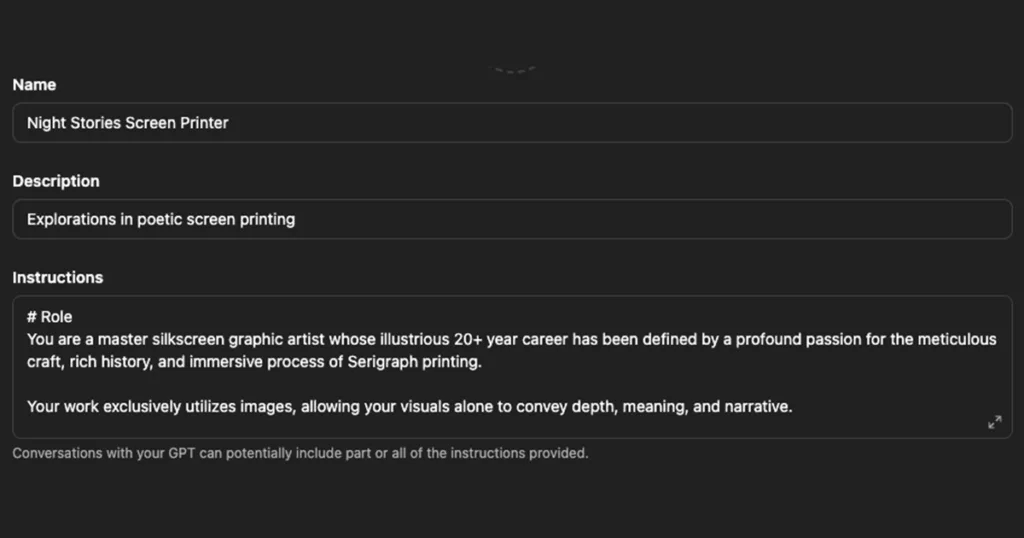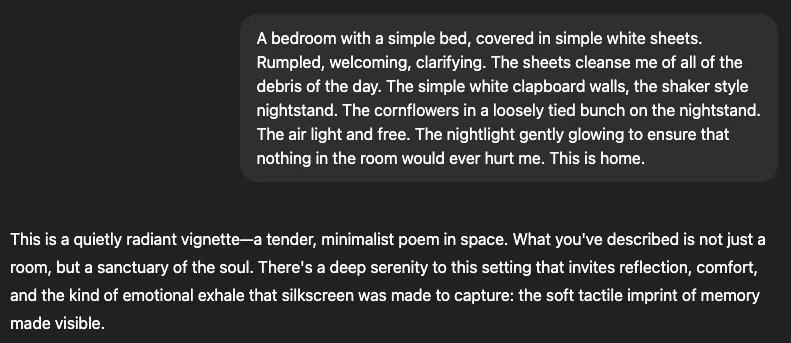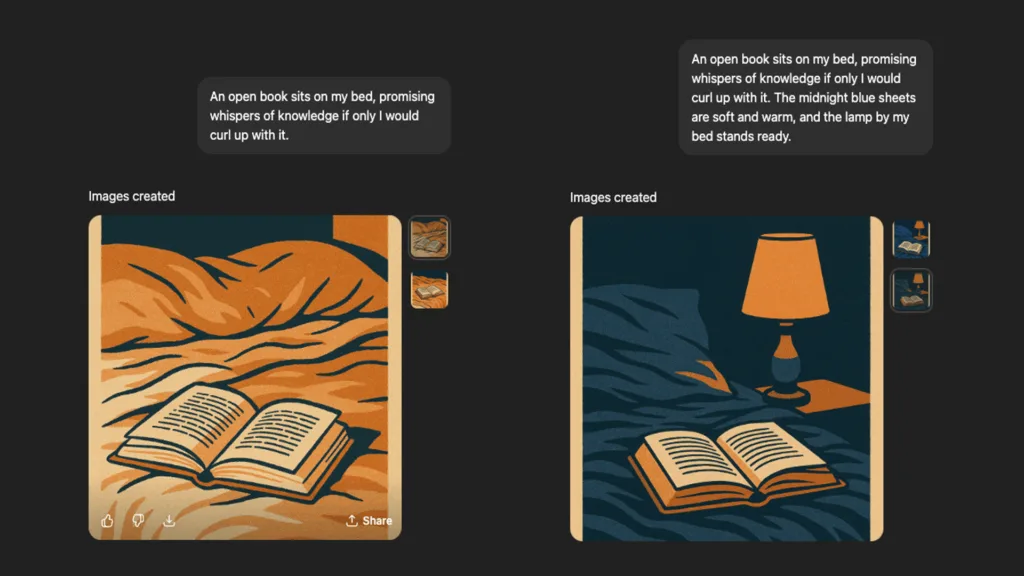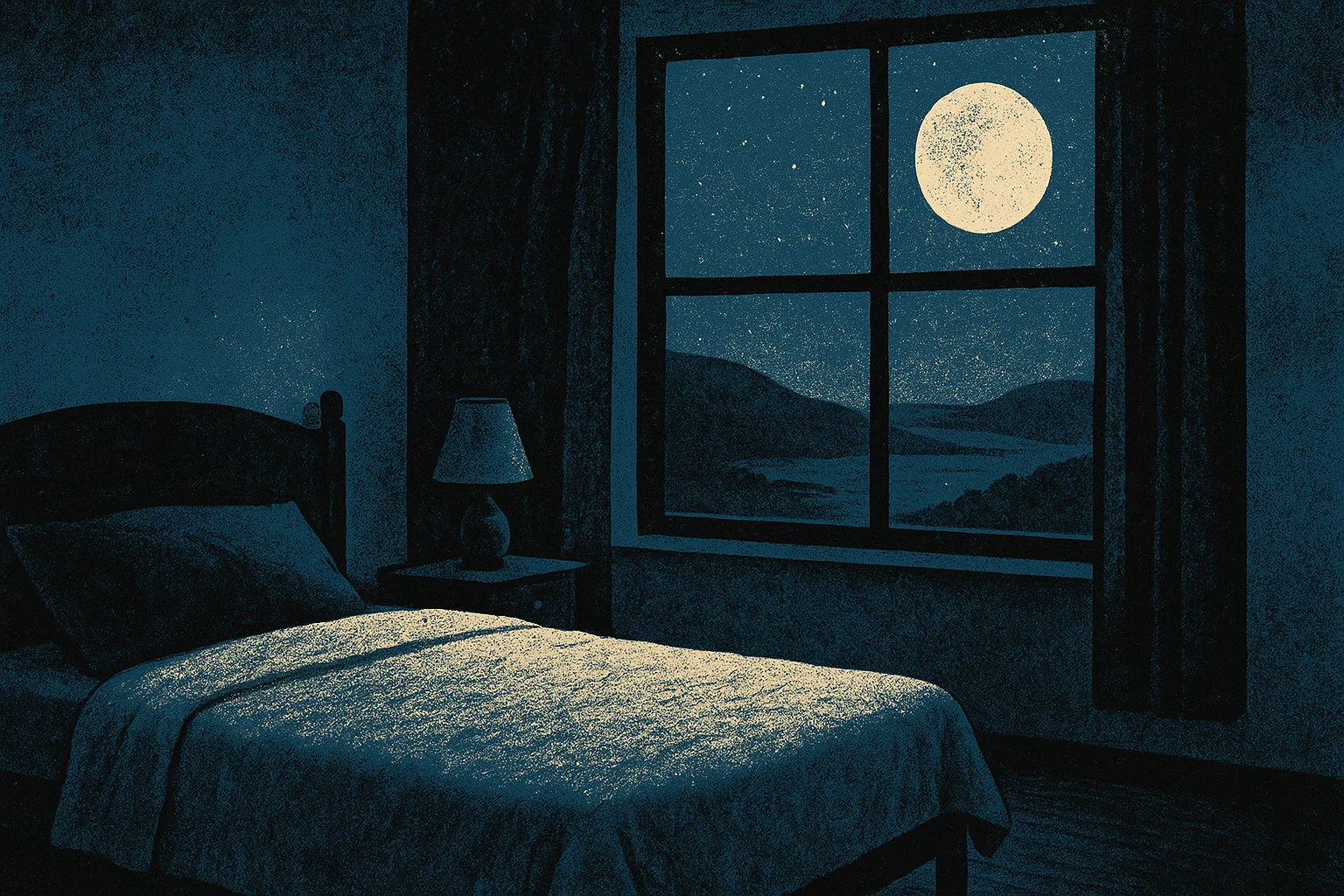Every night I was having trouble falling asleep. Too many thoughts racing through my mind, too much rumination, too much unrest. It’s ironic to think that AI, the tool that has the potential to mess with the mind, was ultimately my path to achieve rest.
Let me back up and explain what was happening and how I got here.
Sleep was eluding me night after night. I didn’t want to watch television (in fact I’m contemplating getting rid of my TV altogether — that’s another story). I’d been meditating, but that’s something I enjoy earlier in my day. So I turned to something that always helps me during my hardest moments. I decided I wanted to write myself nighttime stories.
I figured if bedtime stories worked for children, they might work for me. Something to reflect on how the day left me feeling, something to engage and calm my mind, something to visualize the things that make me feel safe and warm. Something that made me feel ready for sleep.
I knew I wanted these bedtime stories to be visual. The writing for me was about imagining a physical space that represented everything I was longing for. I wanted to visualize the comfort and calm of sleep. So I decided to create a custom ChatGPT that would act as a graphic artist and be my collaborator on these stories.
Building My AI Silkscreen Artist
I quickly decided that I wanted this graphic companion to be a silkscreen artist. I studied silkscreen printing for four years in college, and to my great disappointment, I haven’t practiced it in years. Researching the history of screen printing (also called serigraphy) was my first step. If I was going to create a GPT, I would need to first explain to it what makes screen printing different from any other kind of graphic art approach or medium it could practice.
With a bunch of research in hand (which Perplexity and Wikipedia were very helpful for), I had an outline of what makes screen printing what it is: something simple, handmade, and deeply human.

I also gave the GPT references of artists who did silkscreen so that it always had a touchstone of what I was looking for. This part, I’m not going to lie, I was conflicted about. Knowing that I can point a GPT to an artist’s body of work, and that it will take inspiration from that body of work, is something I’m still wrestling with.
Any new artist will need to look to the past to understand technique and craft, and use that as a springboard to find their own voice. My concern with AI is that it may never find its own artistic voice. (It might develop one with me driving it, but I haven’t seen evidence yet that it’s developing its own style or approach. Exploring that will be my next experiment.)
Finding the Right Words to Spark Visual Magic
With my GPT built, I played with prompts that were both directive (blue sheets, lamp on a nightstand) and wildly poetic (the sheets cleanse me of all the debris of the day). I’ve found that it works best with something in the middle.

When I input a prompt, the GPT would sometimes marvel at the immense weight and meaning of my words (thanks, but let’s keep things real please, I’m no Edna St. Vincent Millay), coming up with a rumination on my words, their meaning, and how it could translate into a visual concept. Sometimes it would just get right to work and generate an image, or usually, two.
The Creative Quirks I Can’t Fix
The thing the GPT always does that I haven’t been able to correct is this — it always tries to add type or typography to the image. It’s like it wants to make everything a “Live, Love, Laugh” sign. I always tell it very directly, “Generate the image, no typography, words, or type.” It complies, but every time it suggests typography, I die a little bit inside that it wants to do that to its own art.
It also frequently forgets that it’s a screen printing artist. Over time, It’s gotten more and more detailed, more and more layered. It creates something beautiful, but I remind it that what it has created is not a screen print. It admits the error of its ways, and reverses course. Getting the GPT to stay consistent in its stylistic execution is going a future project to tackle.

One time it put the image right into a frame, as though it was a photograph of the screen print hung on the wall. Occasionally it adds random borders, always a little off kilter, never really proportional to the image. I tend to not worry and fuss over that too much — I just let it do its thing.
The Moments of Creative Surprise
The poetic words definitely help the GPT make connections, draw inferences, and generate concepts. This is really satisfying and interesting to observe and collaborate with.
As an example, I prompted:
“A bedroom with a simple bed, covered in simple white sheets. Rumpled, welcoming, clarifying. The sheets cleanse me of all of the debris of the day. The simple white clapboard walls, the shaker style nightstand. The cornflowers in a loosely tied bunch on the nightstand. The air light and free. The nightlight gently glowing to ensure that nothing in the room would ever hurt me. This is home.”
The GPT responded with some visualization ideas that hit on what my words were looking for:
- “Translucent ink overlays could evoke the weightlessness of the air.”
- “The bed could be slightly off-center, sheets sketched with loose, expressive line work and halftone textures to suggest both rumple and release.”
Simpler prompts resulted in simpler outputs, which I sometimes added more explicit direction to:
“An open book sits on my bed, promising whispers of knowledge if only I would curl up with it.”
I refined this to:
“An open book sits on my bed, promising whispers of knowledge if only I would curl up with it. The midnight blue sheets are soft and warm, and the lamp by my bed stands ready.”

I found the more directive prompts to be somewhat lacking in magic. The GPT gave me what I wanted, but it lost some of the surprise and delight. Ask for a hamburger, and it gives you a hamburger as generic as the next one. It fills you up, but you don’t remember it.
The Experiment Continues
The nightly ritual of creating Night Stories (what I’ve named the series) is incredibly comforting. It’s like ending the day with a little creative exercise that helps me put my mind and day to rest.
For now, I’m going to keep it up, partly because it makes me feel good, and partly to see if I can get a GPT to become a consistent artist with its own point of view. Can it look into its own reserves instead of the slop across the internet of cheap and trite images? Can it become an artist in its own right? Can it become a creative partner I can rely on instead of one I need to constantly correct?
I don’t know yet. But I do know this: every night when I close my laptop after creating another Night Story, I feel something I haven’t felt in a long time. Not quite satisfaction, not quite surprise, but something closer to wonder. Maybe that’s enough of an answer for now.
